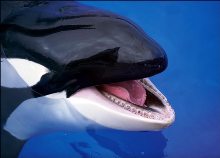Until SeaWorld Shuts Down, the Toll of Victims Will Mount
Eyebrows are shooting up in the animal protection world, as SeaWorld has hired professional animal entertainer Jack Hanna to sing its praises in public. Given his own record of responsibility for numerous animal attacks (including an incident in which a chimpanzee he was using in a public display bit off a 5-year-old girl’s finger) and his history of using underage animals who should be with their mothers instead of in noisy crowds and under bright lights, Hanna seems a good fit for SeaWorld. Despite its heavy public relations efforts, the marine park has a long history of getting away with murder while turning a fast buck. For example, the statements from SeaWorld about what a surprise, shock, and accident it was that the orca Tilly had drowned and pounded a seasoned trainer to death in Orlando deserve careful scrutiny. It was the third time that that particular orca had killed a human being (Tilly’s son also killed a trainer last year in Spain), both other deaths having also been dismissed by the amusement park as “accidental” when they were likely anything but. The marine amusement park environment is rife with deaths, close calls, and injuries.
As Jason Hribal writes in his soon-to-be-released book, Fear of the Animal Planet: The Hidden History of Animal Resistance, Tilly and two of the other orcas came from Sealand of the Pacific in Canada, a facility that closed shortly after all three whales were involved in a fatal attack on a trainer. That attack, “carried out by Nootka, Haida, and Tilikum left the park in a public relations freefall. Administrators promised changes. New safety procedures would be initiated. Physical contact between the trainers and whales will no longer be allowed. Guardrails will be installed along the poolside to prevent slips or bites.” All the same things that SeaWorld is saying as it hopes for the story of the trainer’s death to go away. But in Canada, back then, public pressure did not let up. As Hribal writes, “Between the daily protests at the park’s front gates, national demands that the orcas be released back to the ocean, and the city council’s entrance into the debate, Sealand’s will crumbled. In August of 1991, the park reached a startling decision. ‘After a lot of thought and discussion,’ the director clarified, ‘it was decided killer whales should be phased out.’ … The twenty-nine year old institution had closed permanently.”

